Tag: autobiography
New from the archive
23 June 2015 | This 'n' that
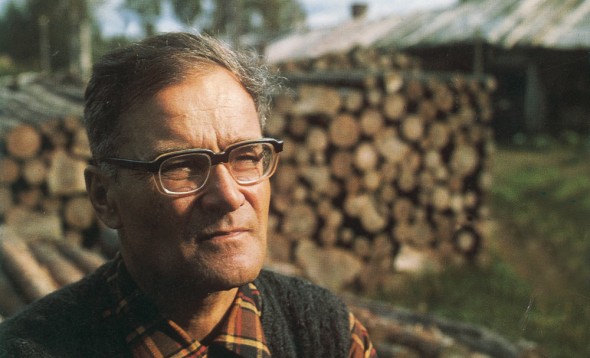
Kalle Päätalo. Photo: Gummerus.
This week, Kalle Päätalo – once Finland’s most successful author
Author Kalle Päätalo (1919-2000) was a rare bird in the book-publishing world. Beginning in 1962, his series of autobiographical novels Juuret Iijoen törmässä (‘Roots on the banks of the Iijoki river’) were published annually in editions of 100,000 copies. At a cautious estimate, one million Finns out of a total population of five million read Päätalo. He was a unique phenomenon, and, for his publishers, a highly lucrative one.
Despite his popularity, this former forestry worker and builder never achieved critical acclaim; the literary establishment remained cool towards him. What was the secret of his enormous appeal? By 1987, when we published this week’s extracts, the way of life Päätalo was chronicling was fast disappearing; he portrayed of the living and working conditions of the far north and the rich dialect of the region with a near-anthropological accuracy. Päätalo’s autobiography was almost coterminous in scope with the existence of independent Finland, and his depiction of the ruggedly individual characters of the north was at the same time a celebration of national values.
In this excerpt, from Tammerkosken sillalla (‘On Tammerkoski bridge’, 1982), the narrator’s excitement as he finds Martin Eden by Jack London – along with the Finnish author Mika Waltari, one of Päätalo’s great writer-heroes – in the local library is palpable. And many of his readers would have remembered the difficulties of living in small apartments at close quarters with other family members, in this case a less-than-congenial mother-in-law: ‘My cock cowered among my pubic hair like a guilty prankster after a practical joke…’.
![]()
The Books from Finland digitisation project continues, with a total of 400 articles and book excerpts made available on our website so far. Each week, we bring a newly digitised text to your attention.
Peter von Bagh: Muisteja [Memories]
17 April 2015 | Mini reviews, Reviews
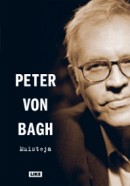 Peter von Bagh
Peter von Bagh
Muisteja [Memories]
Helsinki: Like, 2014. 426 pp., ill.
ISBN 978-952-01-1093-2
€29.95, hardback
Peter von Bagh (1943–2014) became a cinephile legend in his lifetime. He was the son of a German emigrée, a psychiatrist from St Petersburg; his mother died when he was six, and his stepmother, ‘mean and stupid’, destroyed in his absence all his personal belongings, books and photographs. In this memoir von Bagh contends that his own films were to a large extent a means of reconstructing the past that his stepmother destroyed. Von Bagh was editor-in-chief of Filmihullu (‘Film fan’) magazine for 43 years, published more than 30 books on cinema and its history, worked in radio and for the National Film Archive, and directed dozens of films, mainly for television. He promoted the Midnight Sun Film Festival in Sodankylä, Lapland, for twenty-eight years, and held the post of artistic director of Bologna’s Il cinema Ritrovato festival for thirteen. This book presents the reader with a huge number of people, films, books, encounters and travels; although, typically of von Bagh, who, despite his doctorate, never cared for ‘formalities’, and rather annoyingly, there is no index. (Surely the publisher could have provided them!) But both self-criticism and the acidic, boldly blunt comments on anything – or anybody – that the writer considers ridiculous or stupid, the knowledge and the experience as well as the sardonic humour make the book a very worthwhile experience. The reader is very thankful for the fact that the author was able to finish writing this book of memoirs.
Why translate?
28 January 2015 | Essays, Non-fiction
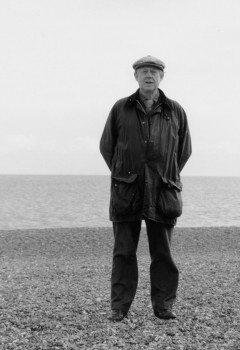
Down by the sea: Herbert Lomas in Aldeburgh. – Photo: Soila Lehtonen
‘People do not read translations to encourage minor literatures but to rediscover themselves in new imaginative adventures‚’ says the poet and translator Herbert Lomas in this essay on translation (first published in Books from Finland 1/1982). ‘Translation is a thankless activity,’ he concludes – and yet ‘you have the pleasure of writing without the agony of primary invention. It’s like reading, only more so. It’s like writing, only less so.’ And how do Finnish and English differ from each other, actually?
Any writer’s likely to feel – unless he’s a star, a celebrity, a very popular and different beast – that the writer is a necessary evil in the publisher’s world, but not very necessary. How much more, then, the translator from a ‘small’ country’s language.
Why do it? The pay’s absurd, you need the time for your own writing, it’s very hard to please people, and translation is, after all, the complacent argument goes, impossible. I’m convinced by all these arguments, and really I can’t afford to go on; but I don’t regret what I’ve done and, looking back, I can find two reasons for translating Finnish writing, one personal, the other cultural. More…
Aho & Soldan: Helsinki 1950-luvun väreissä / Helsingfors in 1950-talets färger / Helsinki in 1950’s colours
11 January 2015 | Mini reviews, Reviews
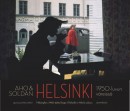 Aho & Soldan: Helsinki 1950-luvun väreissä / Helsingfors in 1950-talets färger / Helsinki in 1950’s colours
Aho & Soldan: Helsinki 1950-luvun väreissä / Helsingfors in 1950-talets färger / Helsinki in 1950’s colours
Teksti / text: Eino Leino
Translation into Swedish by Marjut Hökfelt, into English by Elina Adams
Helsinki: Gummerus, 2014. 168 pp., ill.
ISBN 978-951-20-9527-8
€36.90, hardback
The photographer Claire Aho (born 1925) is the granddaughter of the author and journalist Juhani Aho (1861–1921) and his artist wife Venny Soldan-Brofeldt. Two of Aho’s sons, Heikki and Björn, became photographers and documentary film producers, founding the company Aho & Soldan. In the 1940s Heikki’s daughter Claire began to work for Aho & Soldan and becme a well-known fashion photographer. She also began photographing her native Helsinki; in 1952 she was assigned to film the Helsinki Summer Olympics. She continued her collaboration with Pathé News until the early 1960s. Colour came, literally, into the picture after the war; the photographs in this book feature life in the 1950s Helsinki. The photographs in their gently faded colours of the still small city, its inhabitants, parks, buildings and monuments are taken by either the two brothers or Claire Aho – in their time they were all signed just by Aho & Soldan. In his essay journalist Eino Leino portrays life in the city that he remembers from his own childhood in the post-war era, which to today’s reader appears sweetly idyllic, somehow optimistic and peaceful; the city has changed greatly – and yet stayed the same.
Erkki Tuomioja: Siinä syntyy vielä rumihia. Poliittiset päiväkirjat 1991–1994 [Heads will roll. Political diaries 1991–1994]
20 November 2014 | Mini reviews, Reviews
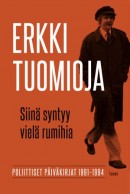 Siinä syntyy vielä rumihia. Poliittiset päiväkirjat 1991–1994
Siinä syntyy vielä rumihia. Poliittiset päiväkirjat 1991–1994
[Heads will roll. Political diaries 1991–1994]
Editor: Veli-Pekka Leppänen
Helsinki: Tammi, 2014. 680 pp., ill.
ISBN 978-951-31-7555-9
€39, hardback
Erkki Tuomioja (born 1945) has for a long time served as a member of parliament and as Finland’s foreign minister. A left-wing Social Democrat, Tuomioja has since his youth been known as a sharp-minded social debater as well as a writer and researcher. His publications include a biography of his grandmother, the Estonian-born eminent writer and dramatist Hella Wuolijoki. These fascinating political diaries from the early 1990s cover such topics as the break-up of the Soviet Union, Finland’s increasingly close integration with western Europe, and with the disputes about the Social Democrat leadership and the remarkable rise of Martti Ahtisaari, who came in from outside to become the party’s presidential candidate, and ultimately the country’s president. Tuomioja’s characterisations of Finnish politicians and political life are apt and plain-spoken, with particular criticism reserved, for example, for President Ahtisaari. Tuomioja does not conceal his own doubts and disappointments, and accepts that some of his views of the time do not correspond to those that he holds today. The editor provides the reader with a summary of the important events at the beginning of each month.
Translated by David McDuff
Letters from Tove
6 October 2014 | Extracts, Non-fiction
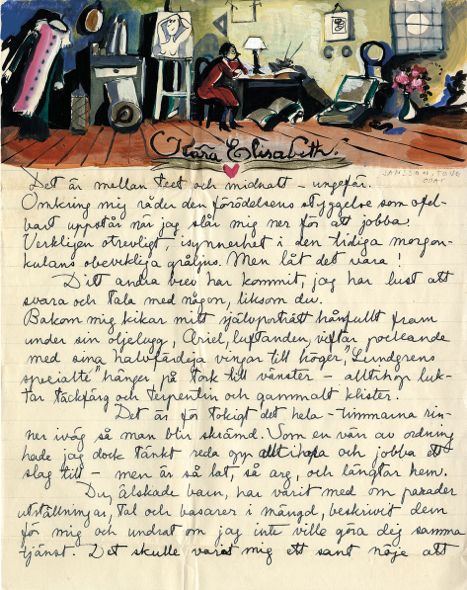
Early days: Tove Jansson went to Stockholm to study art when she was just 16. A letter to her friend Elisabeth Wolff, from November 1932
Artist and author Tove Jansson (1914–2001) is known abroad for her Moomin books for children and fiction for adults. A large selection of her letters – to family, friends and lovers – was published for the first time in September. In these extracts she writes to her best friend Eva Konikoff who moved to the US in 1941, to her lover, Atos Wirtanen, journalist and politician, and to her life companion of 45 years, artist Tuulikki Pietilä.
Brev från Tove Jansson (selected and commented by Boel Westin and Helen Svensson; Schildts & Söderströms, 2014; illustrations from the book) introduced by Pia Ingström
7.10.44. H:fors. [Helsinki]
exp. Tove Jansson. Ulrikaborgg. A Tornet. Helsingfors. Finland. Written in swedish.
to: Miss Eva Konikoff. Mr. Saletan. 70 Fifty Aveny. New York City. U.S.A.
Dearest Eva!
Now I can’t help writing to you again – the war [Finnish Continuation War, from 1941 to 19 September 1944] is over, and perhaps gradually it will be possible to send letters to America. Next year, maybe. But this letter will have to wait until then – even so, it will show that I was thinking of you. Curiously enough, Konikova, all these years you have been more alive for me than any of my other friends. I have talked to you, often. And your smiling Polyfoto has cheered me up and comforted me and has also taken part in the fortunate and wonderful things that have happened. I remembered your warmth, your vitality and your friendship and felt happy! At first I wrote frequently, every week – but after about a year most of it was returned to me. I wrote more after that, but the letters were often so gloomy that I didn’t feel like saving them. Now there are so absurdly many things I have to talk to you about that I don’t know where to begin. Koni, if only I’d had you here in my grand new studio and could have hugged you. After these recent years there is no human being I have longed for more than you. More…
The painter who wrote
6 October 2014 | Non-fiction, Reviews
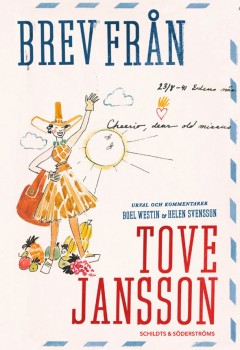 Brev från Tove Jansson
Brev från Tove Jansson
Urval och kommentarer Boel Westin & Helen Svensson
[Letters from Tove Jansson, selected and commented by Boel Westin & Helen Svensson]
Helsingfors: Schildts & Söderströms, 2014. 491 pp., ill.
ISBN 978-951-52-3408-7
€34.90
In Finnish (translated by Jaana Nikula):
Kirjeitä Tove Janssonilta
ISBN 978-951-52-3409-4
Nothing could be more mistaken than to describe Tove Jansson as ‘Moominmamma’. In her statements she was both cutting and complex – conflict-ridden and full of paradoxes. And she was nobody’s mamma.
Tove Jansson (1914–2001) became world famous (especially ‘big’ in Japan) with her Moomins – the characters of her illustrated books for children (1945–1970) – and her books for adults are a part of her work that is at least as interesting. Her training, ambition and artistic passion were, however, focused on painting.
Anyone who has read Boel Westin’s excellent biography – now available in English, Tove Jansson: Life, Art, Words – ‘knows’ all this, but to experience it through Jansson’s own letters, in an alternating process of reflection and recreation, brings the problems close to the reader in quite a different way: one that is shocking, but also deeply human. More…
Life: facts and fiction
10 September 2014 | Extracts, Non-fiction
 In his latest book, the architect and author Arne Nevanlinna (born 1925) recalls, among other things, his Helsinki childhood and family, the wartime period, his fellow architect Alvar Aalto, various aspects of the spirit of the times, his own work and writings. His first novel Marie was published in 2008. Extracts from Arne. Oman elämän kintereillä (‘Arne. On the trail of one’s life’, Siltala, 2014)
In his latest book, the architect and author Arne Nevanlinna (born 1925) recalls, among other things, his Helsinki childhood and family, the wartime period, his fellow architect Alvar Aalto, various aspects of the spirit of the times, his own work and writings. His first novel Marie was published in 2008. Extracts from Arne. Oman elämän kintereillä (‘Arne. On the trail of one’s life’, Siltala, 2014)
My attitude to my own identity has developed from the unconsciousness of childhood, the uncertainty of early adulthood, the artificial arrogance of middle age and the self-analysis of approaching retirement, to my present situation.
Despite the fact that my first book had some degree of success, it took many books before I felt I was a real writer. The process continued for well over ten years, by which time I was already over eighty. Before that, I thought of writing as a way to pass the time and combat loneliness. I imagined that I was writing for a living, and that I lived in order to write. I was in the fortunate position of not to think about my income.
Even then, I knew that this was just a catchphrase for the event that it occurred to someone in the audience to ask me why I wrote. That never actually happened. No wonder, as both question and answer would have been unnecessary, to put it mildly, and stupid, to put it harshly. More…
Seppo Kimanen: Kimasen lento [Flight of the Humblebee]
7 November 2013 | Mini reviews, Reviews
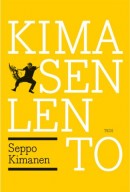 Kimasen lento
Kimasen lento
[Flight of the Humblebee]
Helsinki: Teos, 2013. 447 pp., ill.
ISBN 978-951-851-488-9
€ 28.40, hardback
Professor Seppo Kimanen (born 1949) is a cellist who has served as the director of the Helsinki Festival, held arts management positions in London and Japan, and in 1970 founded a summer music festival in Kuhmo, a small town in northern Finland, for which he continued to provide inspiring, innovative leadership for 35 years. The Kuhmo Chamber Music Festival has gone on to achieve international renown, attracting many celebrated performers. The success of the Kuhmo festival has encouraged the establishment of similar festivals in other locations. Kimanen has been supported in his work by his wife, the Japanese violinist Yoshiko Arai. In his lively, humorous musical memoir with a punning title – Kimanen’s surname is similar to kimalainen, the Finnish word for bumblebee – Kimanen gives a colourful account of the stages of his career in Kuhmo and elsewhere, including his work in the world of classical music and the important figures and leading performers he has been able to bring to Finland to perform.
Translated by Ruth Urbom
Rauni Ollikainen: Finnish beginnings. A childhood in Finland. A memoir
17 October 2013 | Mini reviews, Reviews
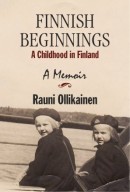 Finnish beginnings. A childhood in Finland. A memoir
Finnish beginnings. A childhood in Finland. A memoir
CreateSpace Independent Publishing Platform, 2012. 240 p., ill.
ISBN 978-1481829571
$20.40, paperback
This first volume of Rauni Ollikainen’s memoirs deals with her early life in Finland and her family’s emigration, when she was eight years old, to a new life in Vancouver, Canada. The details of her childhood, as a member of a proudly working-class Helsinki family – saunas, school, pets, her relationships with her two sisters – are lovingly chronicled. They are interestingly interleaved with the larger history around them – the Winter and Continuation Wars, and Ollikainen’s own evacuation to Sweden, which she was, frustratingly for the reader, too small to remember, and the uncertain political situation in which Finland found itself after the war, which was to prompt the Ollikainens’ departure. The book ends with the early years in Canada as the family begins to find its feet, with more promised in a follow-up volume. Although it would benefit from more in the way of narrative drive, this rich and well-observed memoir gives voice to the experience of thousands of emigrant Finns.
Jörn Donner: Mammuten [The mammoth]
14 February 2013 | Mini reviews, Reviews
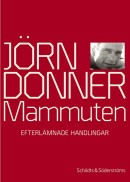 Mammuten. Efterlämnade handlingar
Mammuten. Efterlämnade handlingar
[The mammoth. Leftover business]
Helsinki: Schildts & Söderströms, 2013. 1,128 p., ill.
ISBN 978-951-152-311-54
€37.90, hardback
Finnish translation:
Mammutti. Jälkeenjääneet tekoset
Helsinki: Otava, 2013. 1,087 p., ill.
Suom. [Translated by] Kari Koski
ISBN 978-951-126-311-1
€69,90, hardback
Born in 1933 to a Swedish-speaking family in Helsinki, Jörn Donner, a prominent figure in Finland and Sweden for decades, has published some sixty books. His novel Far och son (‘Father and son’) won him the Finlandia Prize for Fiction in 1985. He has directed and produced films; as a producer he received an Academy Award for Ingmar Bergman’s film Fanny and Alexander. Donner has served two terms in the Finnish Parliament and one in the European Parliament, and represented or supported five different political parties, from the Moscow-loyal Left to the right-wing National Coalition party. Donner’s life has often been the subject of television programmes and he has never passed up the opportunity for more or less well-considered provocations. When he publishes his autobiography at the age of eighty, expectations are high, but Mammuten does not live up to them. It is a sloppy collage of old newspaper articles and introverted diary entries; what emerges is the picture of a man who is disappointed in almost everything he has achieved in life and who sees most of his human relationships as failures. Strangely enough, of the principles that have guided his restless activity and the goals he has striven for in the longer term, Donner writes almost nothing.
Translated by David McDuff
Matti Klinge: Kadonnutta aikaa löytämässä. Muistelmia 1936–1960 [Finding lost time. Memoirs 1936–1960]
10 January 2013 | Mini reviews, Reviews
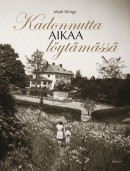 Kadonnutta aikaa löytämässä. Muistelmia 1936–1960
Kadonnutta aikaa löytämässä. Muistelmia 1936–1960
[Finding lost time. Memoirs 1936–1960]
Helsinki: Siltala, 2012. 557 p., ill.
ISBN 978-952-234-136-5
€31.95, hardback
Professor (Emeritus) Matti Klinge (born 1936) is a prolific historian who has specialised in the history of culture and ideas as well as in the debate on contemporary culture; he has also published 12 volumes of his diaries. In this fascinating volume of memoirs, inspired by writer Marcel Proust, he gives a detailed account of his childhood, schooldays and military service as well as his years of active study, shedding light on the cultural and social life of his time, from the point of view of Helsinki’s educated bourgeoisie, and draws telling character sketches of his contemporaries. The cultural heritage is reflected in the world of Klinge’s values and in his language. This handsomely produced book contains plenty of illustrative material ranging from entrance tickets and works of art to the jacket pictures of books important to the author and photographs. The volume lacks an index of personal names, which will hopefully be added to the final part of the work.
Translated by David McDuff
Teemu Kupiainen & Stefan Bremer
Music on the go
3 March 2010 | Extracts, Non-fiction
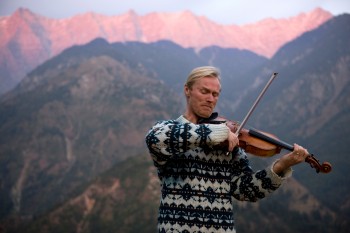
A little night music: Teemu Kupiainen playing in Baddi, India, as the sun sets. Photo: Stefan Bremer (2009)
It was viola player Teemu Kupiainen‘s desire to play Bach on the streets that took him to Dharamsala, Paris, Chengdu, Tetouan and Lourdes. Bach makes him feel he is in the right place at the right time – and playing Bach can be appreciated equally by educated westerners, goatherds, monkeys and street children, he claims. In these extracts from his book Viulun-soittaja kadulla (‘Fiddler on the route’, Teos, 2010; photographs by Stefan Bremer) he describes his trip to northern India in 2004.
In 2002 I was awarded a state artist’s grant lasting two years. My plan was to perform Bach’s music on the streets in a variety of different cultural settings. My grant awoke amusement in musical circles around the world: ‘So, you really do have the Ministry of Silly Walks in Finland?’ a lot of people asked me, in reference to Monty Python. More…
Trial and error?
Issue 4/2008 | Archives online, Essays, On writing and not writing

If you want to write, you need to do it every day, says the author Monika Fagerholm. Trial and error are necessary for her – and so is not being afraid of getting lost in the woods in the process, because only then can amazing things be found
Writers write and writers write every day. I remember seeing this in one of those inspirational guides on writing I enjoy reading – even if they don’t necessarily help you in pursuing your daily writing as much as you would hope. At the worst, they give you a kind of exhausting energy which just leaves you drained. And yes, turning to these kinds of manuals almost always involves an element of desperation; you don’t need advice when everything is going great. More…

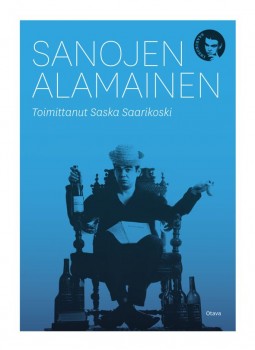 The poet and translator Pentti Saarikoski (1937–1983) was a legend in his own lifetime, a media darling, a public drinker who had five children with four women. His oeuvre nevertheless encompasses 30 works, and his translations include Homer and James Joyce. The journalist Saska Saarikoski (born 1963) has finally read all that work – in search of the father whom he seldom met. The following samples are from his annotated selection of Pentti Saarikoski’s thoughts over 30 years, Sanojen alamainen (‘Servant of words’, Otava, 2012; see
The poet and translator Pentti Saarikoski (1937–1983) was a legend in his own lifetime, a media darling, a public drinker who had five children with four women. His oeuvre nevertheless encompasses 30 works, and his translations include Homer and James Joyce. The journalist Saska Saarikoski (born 1963) has finally read all that work – in search of the father whom he seldom met. The following samples are from his annotated selection of Pentti Saarikoski’s thoughts over 30 years, Sanojen alamainen (‘Servant of words’, Otava, 2012; see